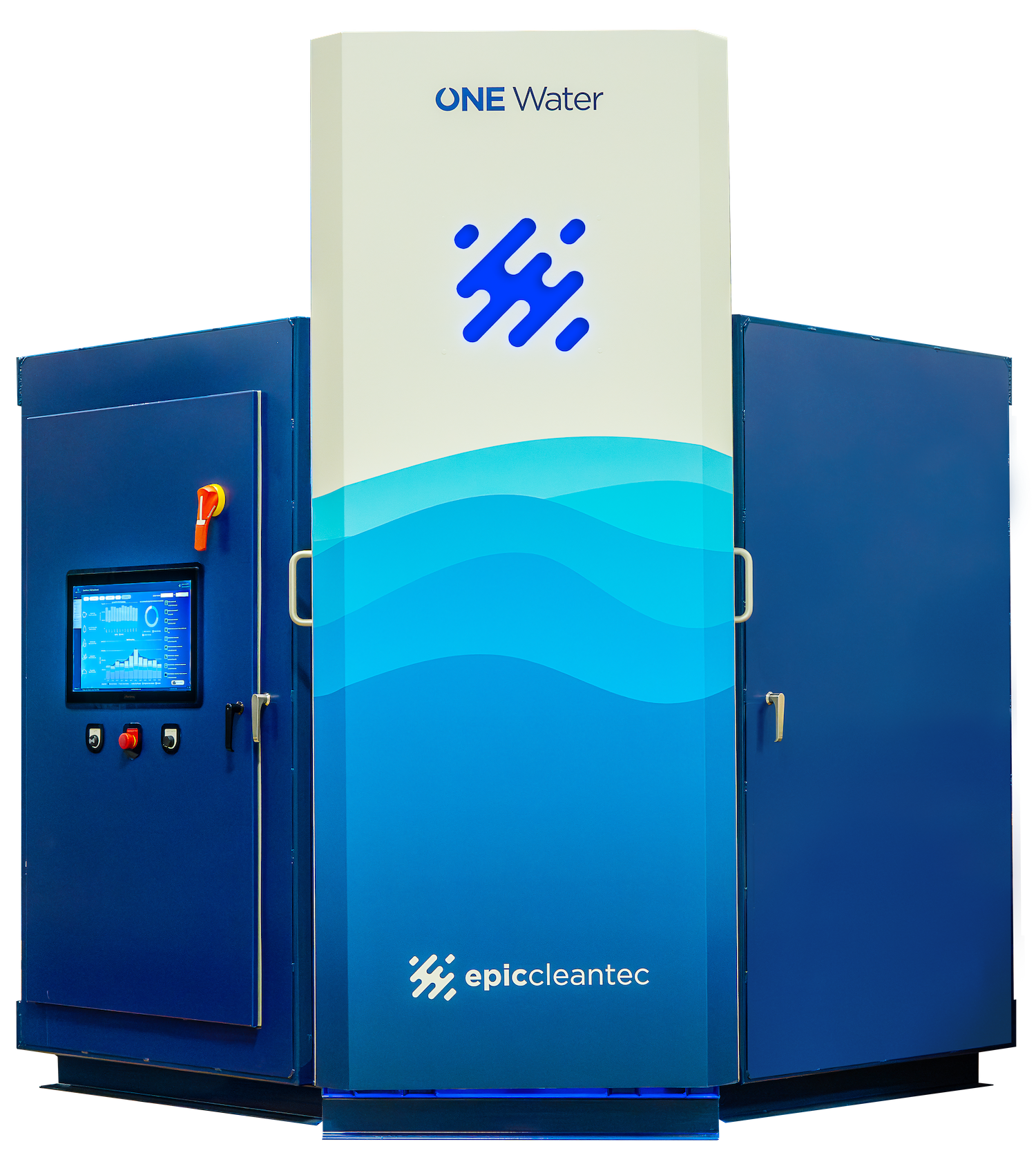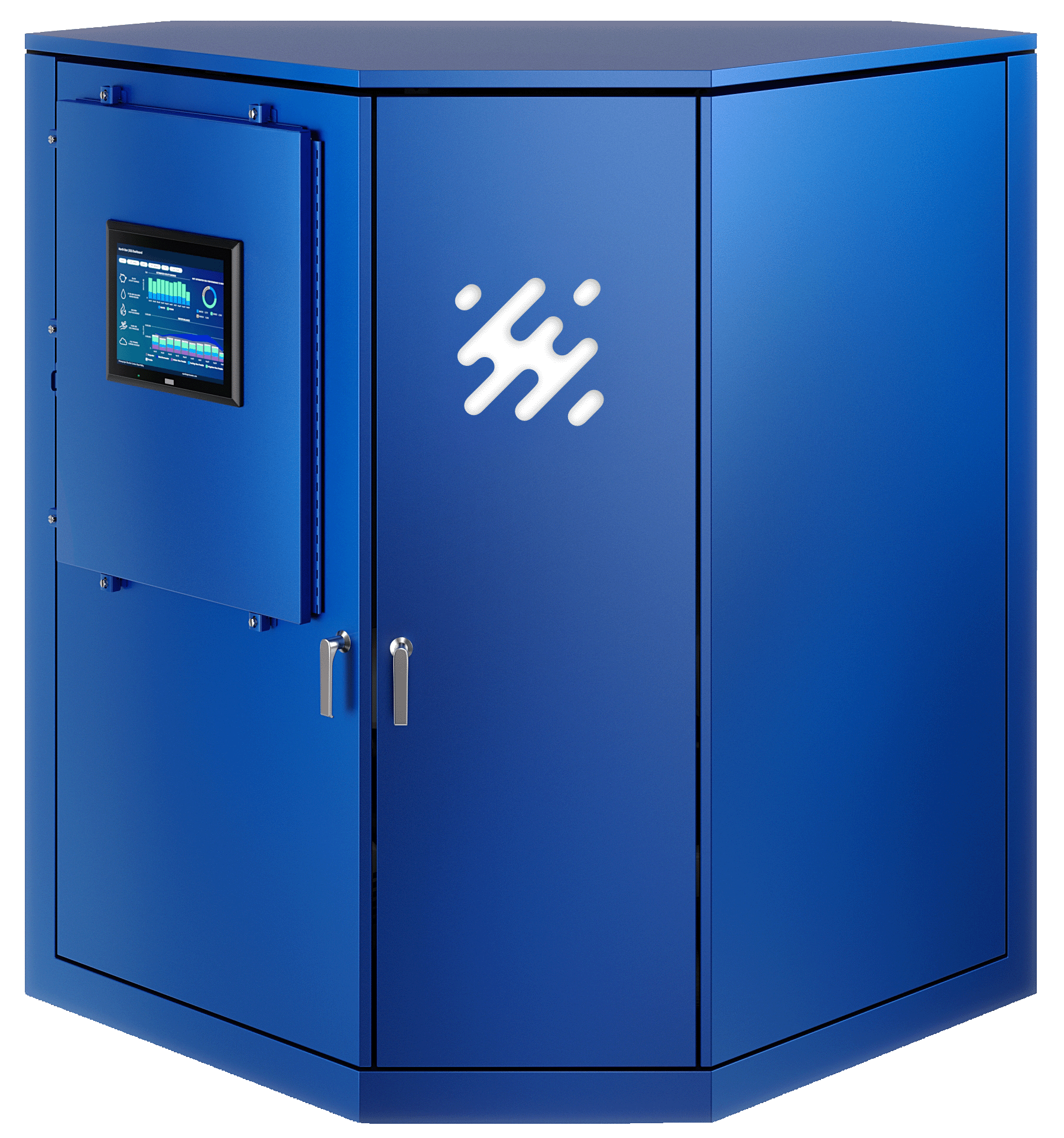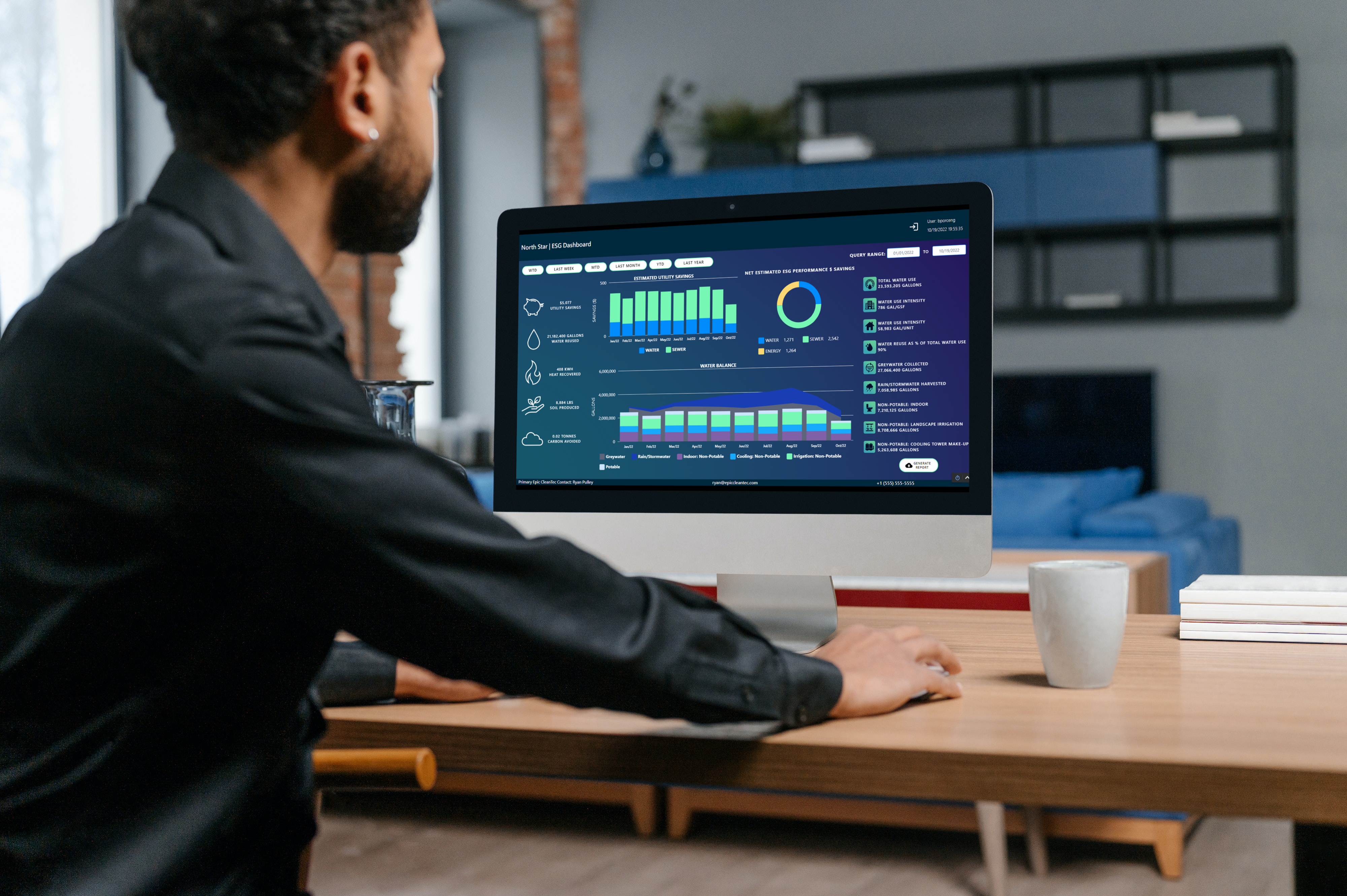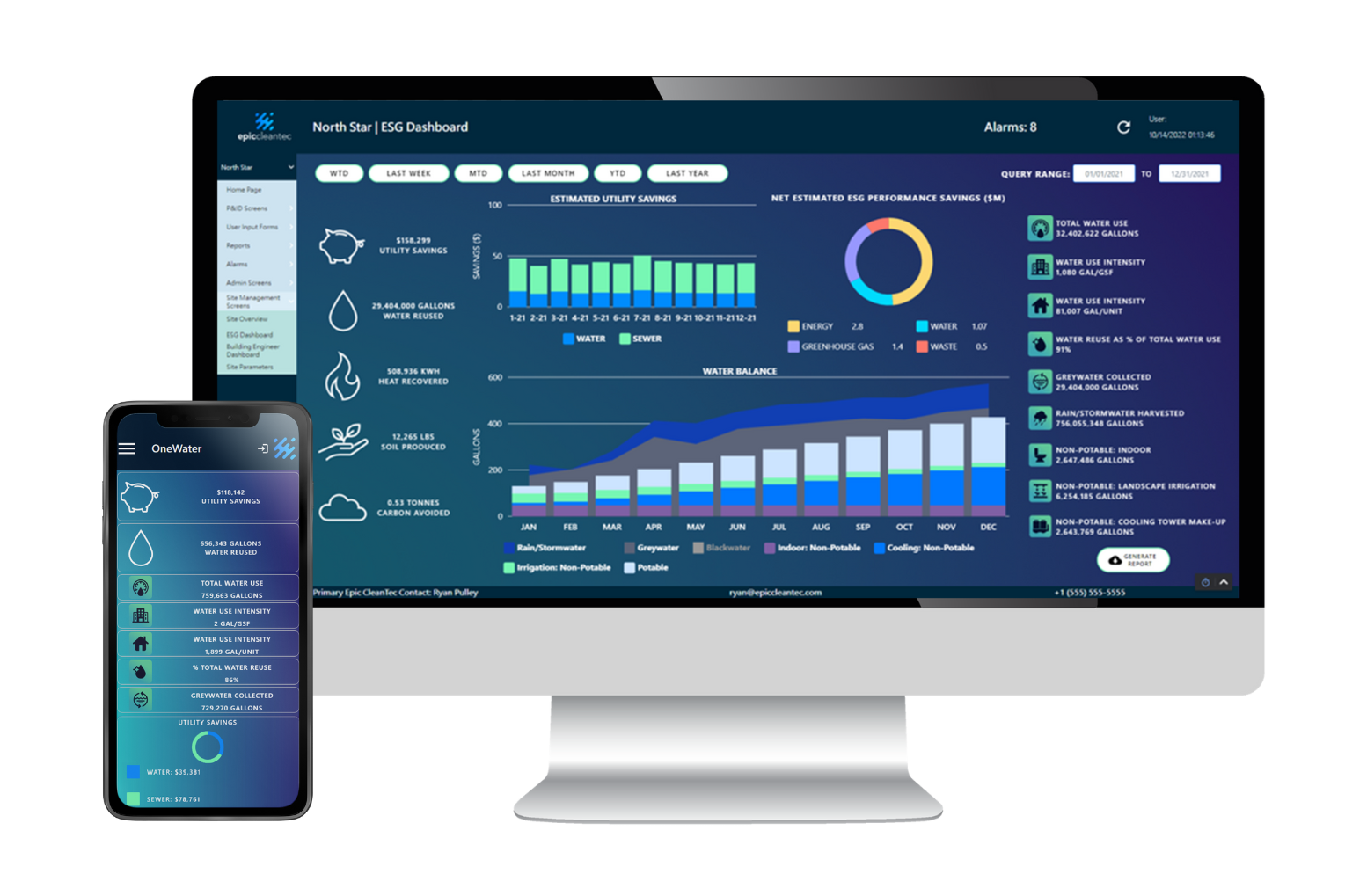How does the OneWater™ system work?
Our system is unique in that it can integrate various wastewater sources within a building — including greywater, blackwater, rainwater, stormwater, condensate, and foundation drainage — into a single management system. This holistic approach ensures maximum efficiency and resource recovery, unlike conventional onsite systems that typically focus on just one type of water.

- Prefiltration and Equalization
Water collected from showers, sinks, toilets, washing machines and other wastewater sources is prefiltered then stored in an equalization tank that buffers out flow, reducing the size of the downstream system.
- Biological Treatment
The raw water undergoes biological treatment for removal of organics, known as Biological Oxygen Demand, or BOD. During the aerobic or anaerobic step, microorganisms metabolize organic compounds in the wastewater, degrading them into simpler substances such as carbon dioxide, water, and biomass.
- Membrane Filtration
Water is then rigorously filtered using membranes with a nominal pore diameter of .04 microns – about 1750X thinner than a single human hair – to remove any remaining impurities.
- Disinfection and Heat Recovery
Before pumping for reuse in the building, water undergoes multiple steps of disinfection via ultraviolet light and chlorine, which render the water safe for reuse in non-potable applications. If heat recovery is included, the system can capture that energy and use it to pre-heat the incoming supply, ultimately reducing hot water demand and cutting down on energy costs.
The OneWater™ system safely treats and recycles water onsite for non-potable reuse applications like toilet and urinal flushing, cooling tower makeup, irrigation, and clothes washing. Leveraging a multi-barrier approach that includes ultrafiltration membranes and state of the art disinfection systems, the OneWater™ system produces a highly purified final product that is guaranteed to meet regulatory requirements for interior and exterior recycled water reuse, meeting disinfected tertiary reuse effluent standards. Learn more about MBR technology and why it’s best suited for buildings.

















